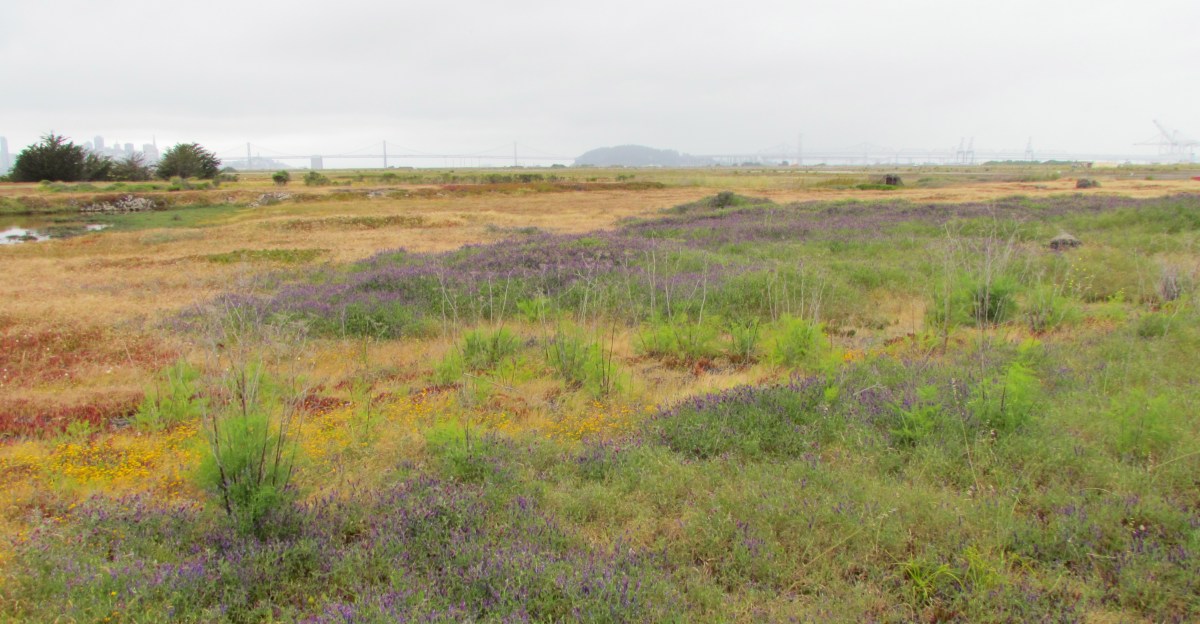
Parks and open space planning for Alameda Point has been hobbling along for 15 years. We still do not know when or who will be welcoming visitors to the Wildlife Refuge. We still do not know who, when, or what will happen with the Northwest Territories. These two areas, located in the runway portion of Alameda Point, comprise over 700 acres. Linking these two areas together with the Seaplane Lagoon frontage and the future Enterprise Park extending to the Encinal Boat Ramp is the vision of the recently launched Greenspace Project at Golden Gate University (GGU).
The Greenspace Project wants to get all the stakeholders – local, regional, state, and federal – in one room, on the same page, so that not only Alameda, but the entire region, can benefit from the exceptional and rare opportunity for creating a world-class park system at Alameda Point. And they want to do it now, before the Environmental Impact Report for Alameda Point is drafted.
The Greenspace Project is under the umbrella of GGU’s Center on Urban Environmental Law (CUEL). Alameda Point is the Project’s first endeavor, and they are partnering with the Washington, DC-based Urban Land Institute (ULI). They have retained the landscape planning services of accomplished open space planner Stephanie Landregan.
Contiguous habitat and parkland corridor
They advocate creating a contiguous habitat and parkland corridor that orients visitors and planners toward the western open space. In practical terms, this would include park frontage around and directly adjacent to the Seaplane Lagoon, rather than concrete, and commercial establishments. Businesses and residences under this vision would be set back several hundred feet, which on the north side would essentially mean where the hangars now sit.

Sustainable Design
Open space planner Landregan recently spelled out her philosophy to the city’s park master planner Linda Gates. Said Landregan, “The economic possibilities at Alameda Point are not as easily penciled out, but there are already a series of mediocre developments along the Alameda-Oakland Estuary (with structures pressed right up to the waterfront instead of set back to allow the beautiful natural surroundings to take center stage) that have stumbled financially despite excellent public transit access. Why attempt another one at Alameda Point when the site promises so much more? What is unique about Alameda Point? It is hidden in the remnant landscape and can be woven into the redevelopment, still protecting the wildlife, land banking wetlands along the perimeter, introducing a raised bike trail and walking trail that culminates at a point park with small retail, and auto access on the west side of the point, parking and passive recreation.”
She goes on to say, “ The concern we have is that Alameda Point’s open space, parkland and wildlife habitat will be developed piecemeal, with the result being fragmentation. The City of Alameda’s plans for Alameda Point should holistically incorporate the wetlands, the refuge, Seaplane Lagoon, parks and paths and trails to make this magnificent site development a shining example of the Hannover Principles for Design in Sustainability. Adopted in 2000 in conjunction with the World Fair held in Hannover, Germany, the Hannover Principles called for open space/habitat designations and planning that respect natural borders more than the jurisdictional border of particular agencies.”

Large-acreage parks make economic sense
CUEL’s co-director Paul Kibel remarked in the letter to the city, “There is a well developed body of city planning literature demonstrating that the creation of large-acreage landmark naturalist parks is one of the best strategies to maintain high urban property values and the economic health of a community.” He goes on to point out that going big not only has future economic benefits. It may ultimately be easier to implement by bringing onboard regional, state and federal entities rather than having smaller park developments tied to private developer proposals or the city.
For conceptual purposes CUEL has adopted the term Flight Park for their Alameda Point effort. They emphasize, “there does not need to be ‘one’ park at Alameda Point under the jurisdiction of a ‘single’ entity. Rather, the concept of Flight Park is employed as a helpful device to allow everyone involved – city of Alameda staff, federal planning staff, adjacent communities, park agency staff – to think about the tremendous greenspace opportunities (both environmental and economic) at Alameda Point in a broader way.”
For more information, read the Greenspace Project’s letter, look at their conceptual map, and visit their website.
More about Stephanie Landregan: She is the former Chief Landscape Architect for the Mountains and Conservation Recreation Authority in Southern California, and the designer and advocate for the acclaimed August Hawkins natural park and the Vista Hermosa Park, both in Los Angeles.


This is the best possible use for alameda point!
There are masses of empty buildings here already,
as close as the Marina Village development. If
housing and office space is needed so desperately,
why not use what is already built?
M Gordanier
Alameda
LikeLike
This idea might sell better if they take the word “green” off it, which has become a liberals’ cliche for “waste tax money on trying to prevent climate change”. And Germany? The EU doesn’t know how to do anything right! On its merits, its a good idea.
LikeLike